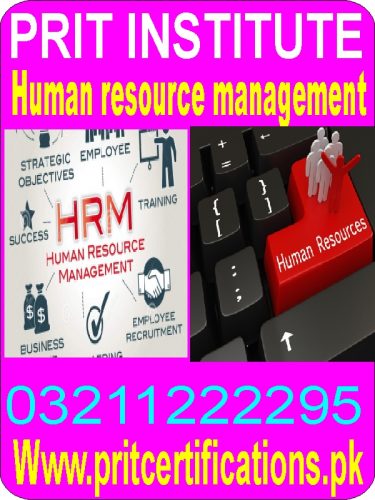Human resource management diploma course in islamabad
- Your Name: waseem
- Contact Number: 03211222295
- Address: isb
- Select Your City: Rawalpindi
- Listed:
- Expires: This ad has expired
Description
Human resource management is the strategic approach to the effective management of people in a company or organization such that they help their business gain a competitive advantage. It is designed to maximize employee performance in service of an employer’s strategic objectives.
Search Results
Featured snippet from the web
Human resource management (HRM) is the practice of recruiting, hiring, deploying and managing an organization’s employees. HRM is often referred to simply as human resources (HR). … HRM is really employee management with an emphasis on those employees as assets of the business
Human resource management (HRM) is the practice of recruiting, hiring, deploying and managing an organization’s…
Human Resource Management (HRM) is the term used to describe formal systems devised for the management of people within an organization. The responsibilities of a human resource manager fall into three major areas: staffing, employee compensation and benefits, and defining/designing work. Essentially, the purpose of HRM is to maximize the productivity of an organization by optimizing the effectiveness of its employees. This mandate is unlikely to change in any fundamental way, despite the ever-increasing pace of change in the business world. As Edward L. Gubman observed in the Journal of Business Strategy, “the basic mission of human resources will always be to acquire, develop, and retain talent; align the workforce with the business; and be an excellent contributor to the business. Those three challenges will never change.”
Until fairly recently, an organization’s human resources department was often consigned to lower rungs of the corporate hierarchy, despite the fact that its mandate is to replenish and nourish what is often cited-;legitimately-;as an organization’s greatest resource, it’s work force. But in recent years recognition of the importance of human resources management to a company’s overall health has grown dramatically. This recognition of the importance of HRM extends to small businesses, for while they do not generally have the same volume of human resources requirements as do larger organizations, they too face personnel management issues that can have a decisive impact on business health. As Irving Burstiner commented in The Small Business Handbook, “Hiring the right people-;and training them well-;can often mean the difference between scratching out the barest of livelihoods and steady business growth’¦. Personnel problems do not discriminate between small and big business. You find them in all businesses, regardless of size.”
PRINCIPLES OF HUMAN RESOURCE MANAGEMENT
Business consultants note that modern human resource management is guided by several overriding principles. Perhaps the paramount principle is a simple recognition that human resources are the most important assets of an organization; a business cannot be successful without effectively managing this resource. Another important principle, articulated by Michael Armstrong in his book A Handbook of Human Resource Management, is that business success “is most likely to be achieved if the personnel policies and procedures of the enterprise are closely linked with, and make a major contribution to, the achievement of corporate objectives and strategic plans.” A third guiding principle, similar in scope, holds that it is the HR’s responsibility to find, secure, guide, and develop employees whose talents and desires are compatible with the operating needs and future goals of the company. Other HRM factors that shape corporate culture-;whether by encouraging integration and cooperation across the company, instituting quantitative performance measurements, or taking some other action-;are also commonly cited as key components in business success. HRM, summarized Armstrong, “is a strategic approach to the acquisition, motivation, development and management of the organization’s human resources. It is devoted to shaping an appropriate corporate culture, and introducing programs which reflect and support the core values of the enterprise and ensure its success.”
POSITION AND STRUCTURE OF HUMAN RESOURCE MANAGEMENT
Human resource department responsibilities can be subdivided into three areas: individual, organizational, and career. Individual management entails helping employees identify their strengths and weaknesses; correct their shortcomings; and make their best contribution to the enterprise. These duties are carried out through a variety of activities such as performance reviews, training, and testing. Organizational development, meanwhile, focuses on fostering a successful system that maximizes human (and other) resources as part of larger business strategies. This important duty also includes the creation and maintenance of a change program, which allows the organization to respond to evolving outside and internal influences. Finally, there is the responsibility of managing career development. This entails

